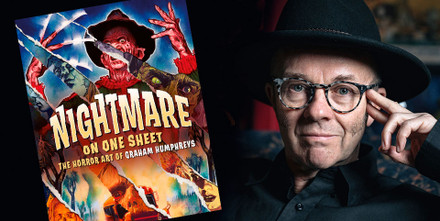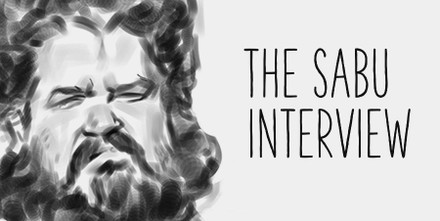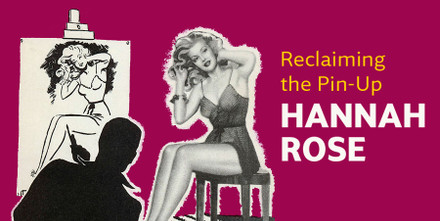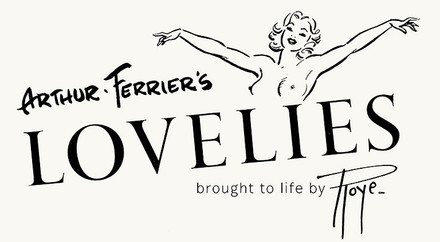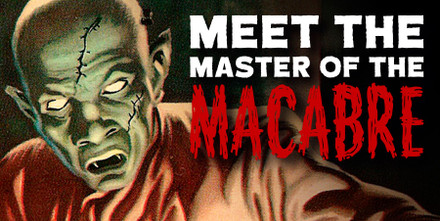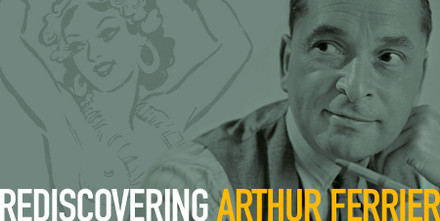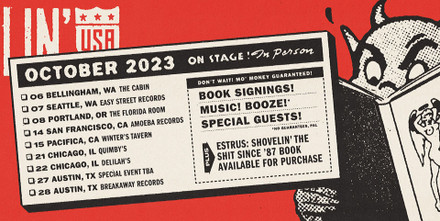When Ferrier met Roye: a medium-spanning tribute to the nude
Posted by Emily Roach on 26th Aug 2024
For those interested in exploring Arthur Ferrier's work further, Pin-up Parade, a three-volume box set, offers an in-depth look at his pin-up art.
‘Walk in beauty / Vaunt thy rose / Flaunt thy transient loveliness’. So concludes the foreword to Arthur Ferrier’s Lovelies, a true pin-up curio and portrait of two erotic masters at the top of their game. Note the use of the plural ‘masters’, for this is not solely a Ferrier endeavour. These are Ferrier’s lovelies ‘brought to life’ by the photographer Horace Roye, who - from 1938 until his early retirement in 1959 - produced some 10,000 nude portraits. Combining Ferrier’s bawdy cartoons with Roye’s sensual and seductive women, Lovelies stands as an uninhibited celebration of the female nude in defiance of a world at war - and does so in more than one dimension.

First and foremost, Lovelies is a medium-bending artistic collaboration. It is an innovative piece of pin-up publishing which dares to bring the cheerful pen-and-ink girls of Ferrier’s strips face-to-face with real women. It feels almost like a fourth wall break, especially for an artist like Ferrier, for whom illustration was the very bedrock of his work. However, this melding of mediums is more organic than it may first appear. Ferrier was a staunch proponent of the artistic merits of drawing from life. Employing models enabled Ferrier to accurately reflect the popular styles of the day and (more crucially) bring a touch of realism to his cheesecake poses. Ferrier would first create sketches, then arrange his models in a controlled studio setting using his clever compositions as his guide, and produce the final illustration from life.
In Lovelies, this process is expanded on and complemented by Roye. These photographic images mark Roye's first book of nude studies posed in the studio. There is a sense that this novel process alerted Roye to a new mode of working, one which he would continue to explore throughout the remainder of his career. Because of this, Ferrier’s work is recontextualised and placed within the boudoir tradition. This is a project which challenges preconceived notions of both their work and, perhaps unconsciously, questions the limits of both mediums.

Celebrating the Female Nude: Art and Pleasure
Despite its unique process, this project was not a cold academic endeavour. Lovelies is both the product of two artists in conversation with one another and a joyful testament to their shared admiration for the female nude.
Highly sensual but never smutty, Lovelies venerates the female form with every click of the shutter and stroke of the pen. There is something for every reader, no matter their tastes, as each page displays the unique sensibilities of both artists. Charming society host Ferrier depicts his ladies as sweet with a cheeky, coquettish allure - clothed but showing tantalising hints of skin. Roye, a brawling ex-diamond smuggler and bona fide libertine who fought obscenity laws, chooses to capture confident and sexually liberated women. Roye’s models are stripped bare and made up like dark-lipped silent film sirens, but there is a spectrum of personality on show from both artists. From cool and aloof blondes to beaming brunettes, the four distinct Roye ladies (Desiree, Joan, Edna, and Rosaline) bear the same haughty, thin eyebrows and gleeful smiles as their Ferrier counterparts.
It is a true celebration of unadulterated nudity that places the imagined female body alongside the real. These pages that tread the line between artists’ book and adult magazine were born in the midst of World War II. They seem to represent a playful eroticism that might have been missing from daily life - a simple pleasure worth fighting for, as well as a morale-boosting treat.

Perhaps Ferrier and Roye had lofty artistic ambitions regarding their place in the erotic canon. Perhaps their chief concern was the pursuit of pleasure. Regardless of their motivations, when reflecting on both their careers, Lovelies remains an intriguing – if anomalous – addition to their bodies of work.
This article was originally published on Pamela Green's website.




